Families of dicotyledons 1. Asteraceae 2. Boraginaceae 3.

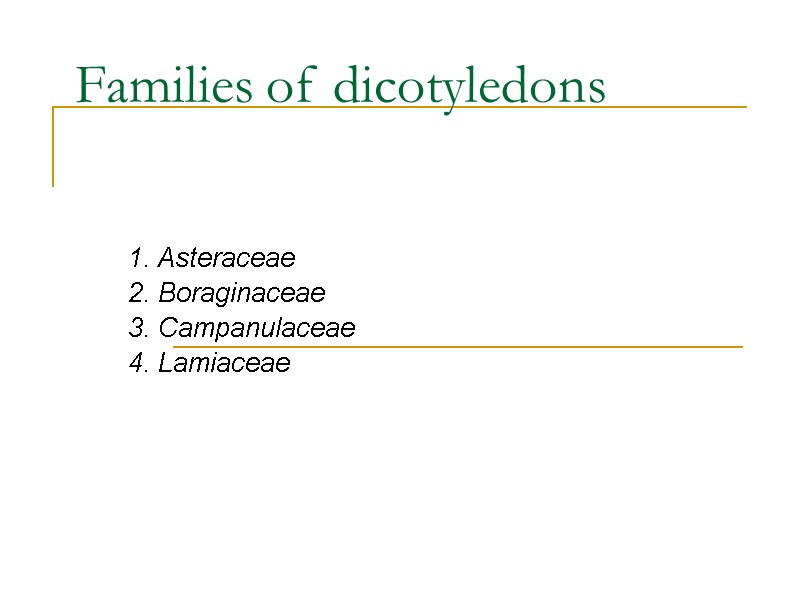
Families of dicotyledons 1. Asteraceae 2. Boraginaceae 3. Campanulaceae 4. Lamiaceae
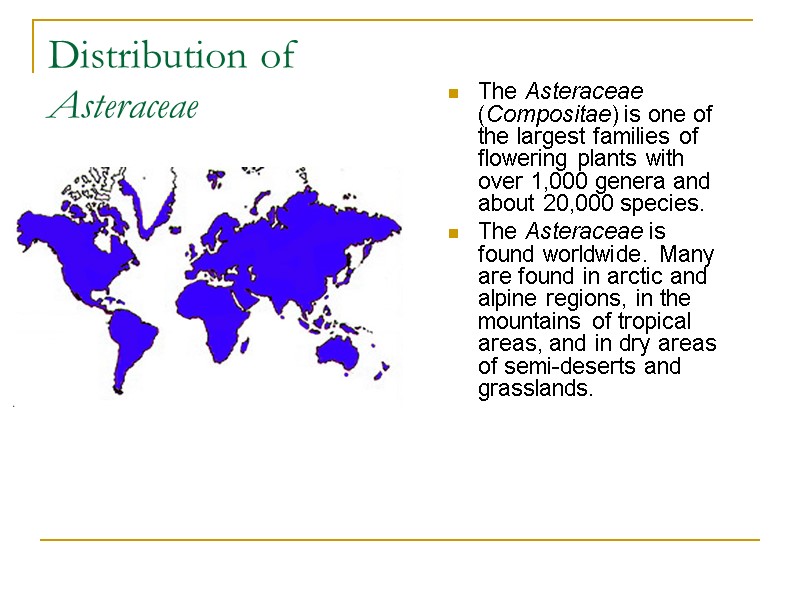
Distribution of Asteraceae The Asteraceae (Compositae) is one of the largest families of flowering plants with over 1,000 genera and about 20,000 species. The Asteraceae is found worldwide. Many are found in arctic and alpine regions, in the mountains of tropical areas, and in dry areas of semi-deserts and grasslands.


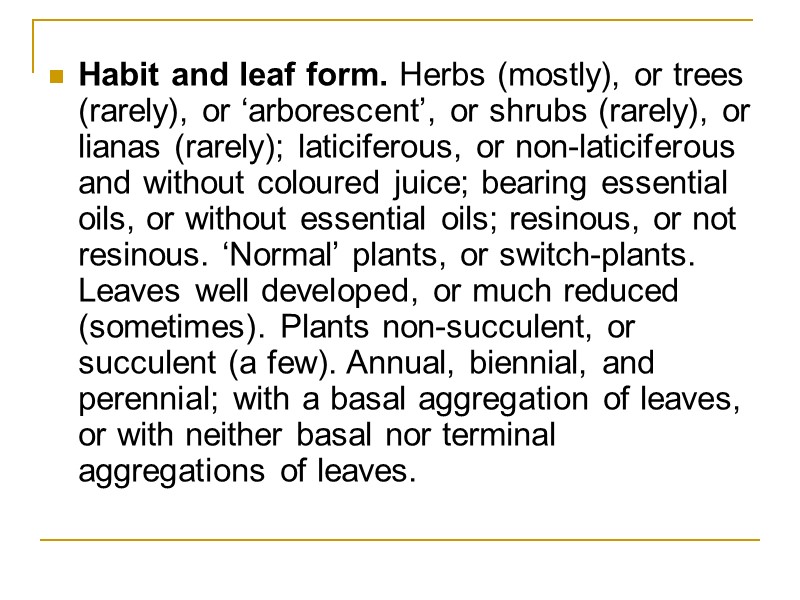
Habit and leaf form. Herbs (mostly), or trees (rarely), or ‘arborescent’, or shrubs (rarely), or lianas (rarely); laticiferous, or non-laticiferous and without coloured juice; bearing essential oils, or without essential oils; resinous, or not resinous. ‘Normal’ plants, or switch-plants. Leaves well developed, or much reduced (sometimes). Plants non-succulent, or succulent (a few). Annual, biennial, and perennial; with a basal aggregation of leaves, or with neither basal nor terminal aggregations of leaves.

Stem anatomy. Secretory cavities present, or absent; with resin, or with latex. Nodes unilacunar, or tri-lacunar, or multilacunar. Cortical bundles present, or absent. Medullary bundles present, or absent. Internal phloem present, or absent.
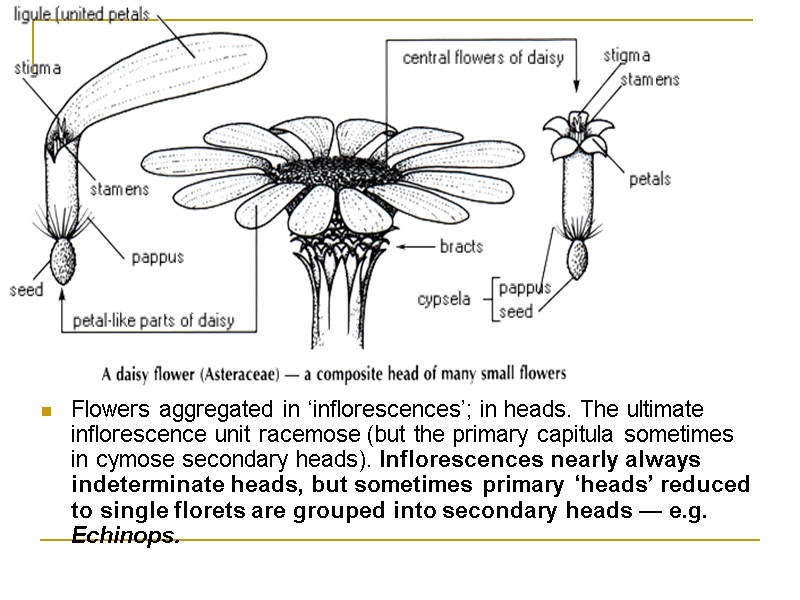
Flowers aggregated in ‘inflorescences’; in heads. The ultimate inflorescence unit racemose (but the primary capitula sometimes in cymose secondary heads). Inflorescences nearly always indeterminate heads, but sometimes primary ‘heads’ reduced to single florets are grouped into secondary heads — e.g. Echinops.
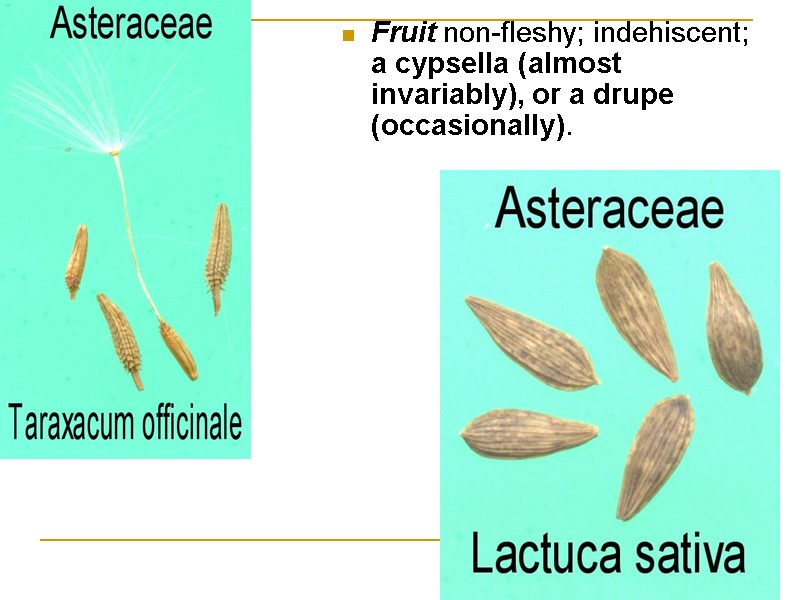
Fruit non-fleshy; indehiscent; a cypsella (almost invariably), or a drupe (occasionally).

Distribution of Boraginaceae Holarctic, Paleotropical, Neotropical, Cape, Australian, and Antarctic. Temperate to tropical. Cosmopolitan, but fewer in cool temperate and tropical regions, and with a strong Mediterranean concentration.
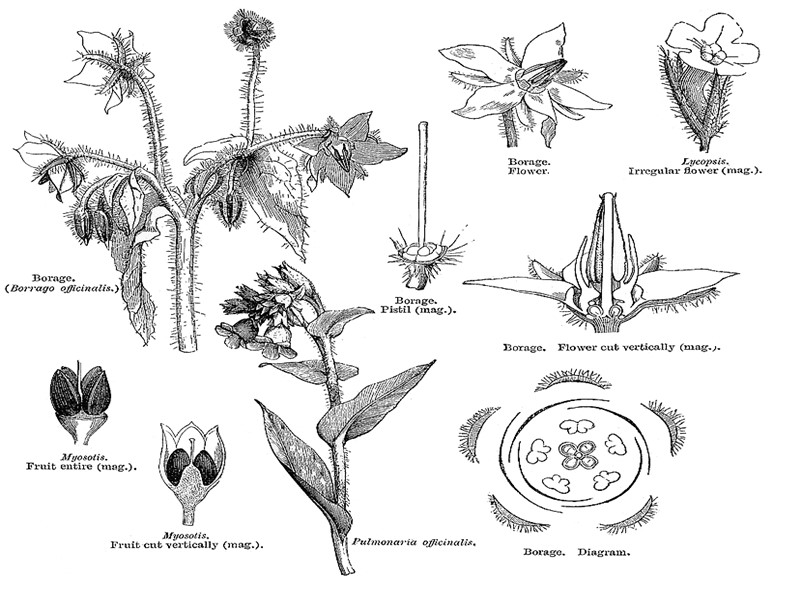
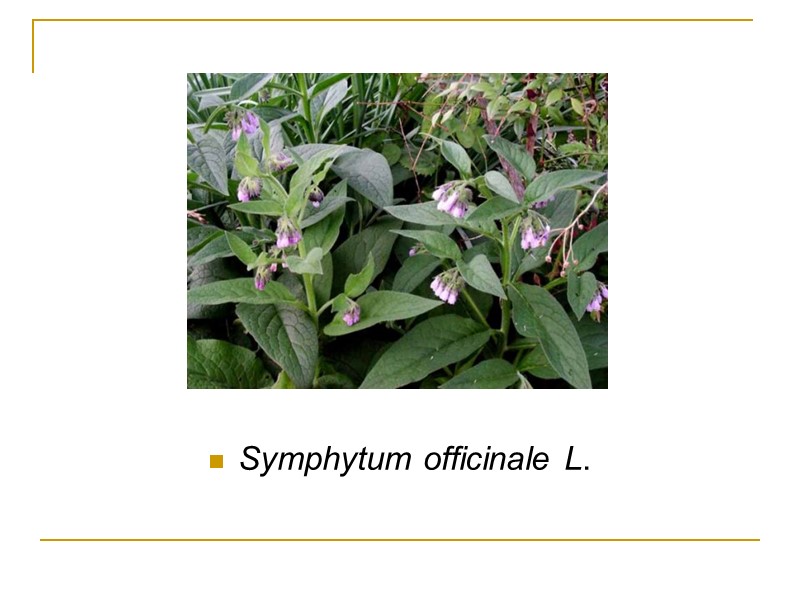
Symphytum officinale L.
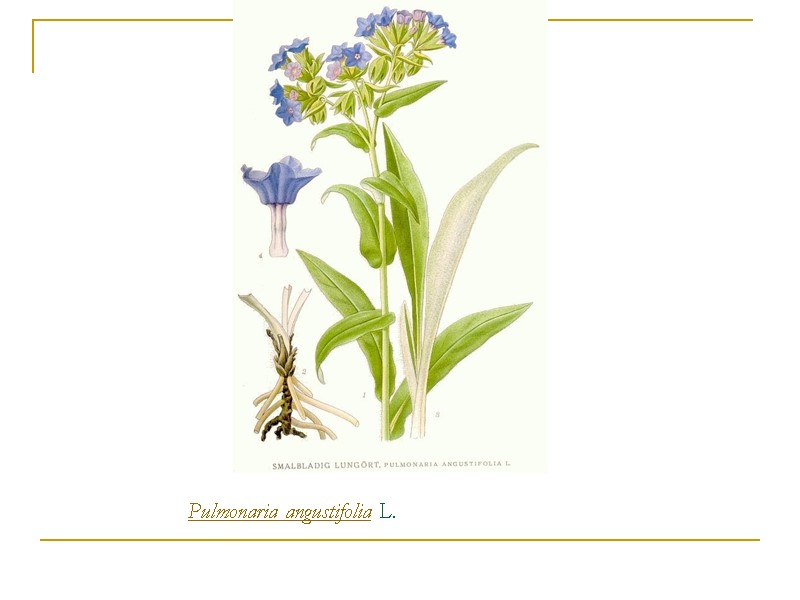
Pulmonaria angustifolia L.
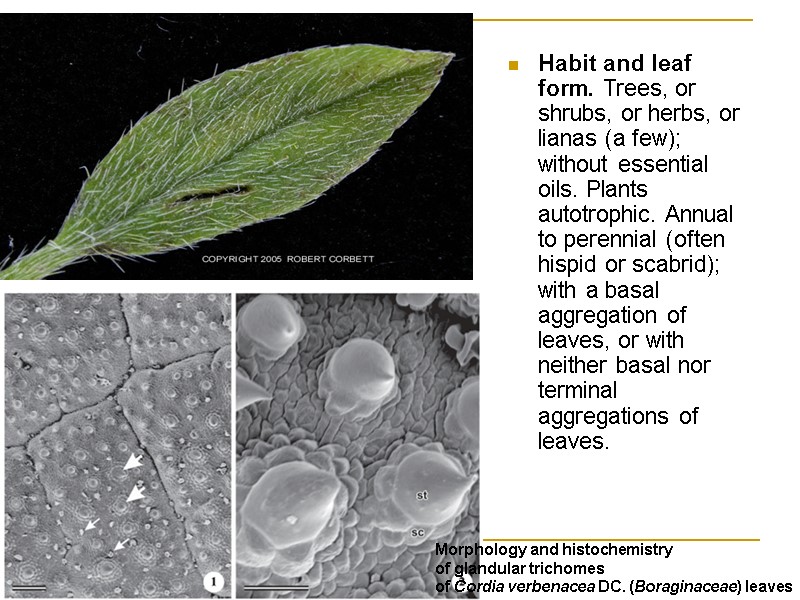
Habit and leaf form. Trees, or shrubs, or herbs, or lianas (a few); without essential oils. Plants autotrophic. Annual to perennial (often hispid or scabrid); with a basal aggregation of leaves, or with neither basal nor terminal aggregations of leaves. Morphology and histochemistry of glandular trichomes of Cordia verbenacea DC. (Boraginaceae) leaves
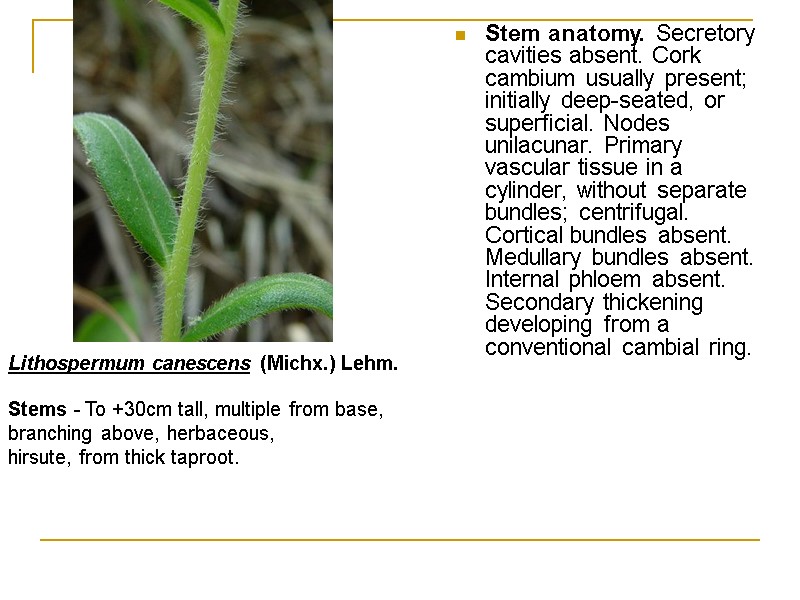
Stem anatomy. Secretory cavities absent. Cork cambium usually present; initially deep-seated, or superficial. Nodes unilacunar. Primary vascular tissue in a cylinder, without separate bundles; centrifugal. Cortical bundles absent. Medullary bundles absent. Internal phloem absent. Secondary thickening developing from a conventional cambial ring. Stems - To +30cm tall, multiple from base, branching above, herbaceous, hirsute, from thick taproot. Lithospermum canescens (Michx.) Lehm.
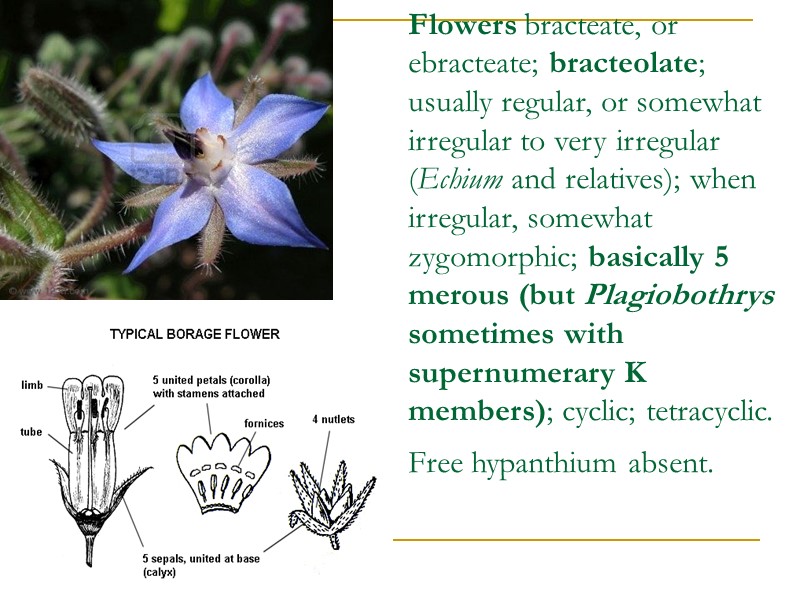
Flowers bracteate, or ebracteate; bracteolate; usually regular, or somewhat irregular to very irregular (Echium and relatives); when irregular, somewhat zygomorphic; basically 5 merous (but Plagiobothrys sometimes with supernumerary K members); cyclic; tetracyclic. Free hypanthium absent.
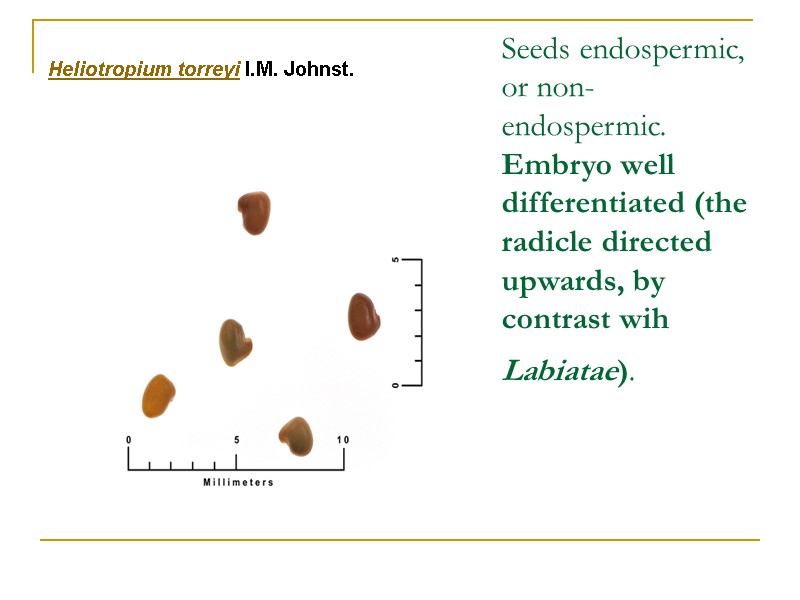
Seeds endospermic, or non-endospermic. Embryo well differentiated (the radicle directed upwards, by contrast wih Labiatae). Heliotropium torreyi I.M. Johnst.
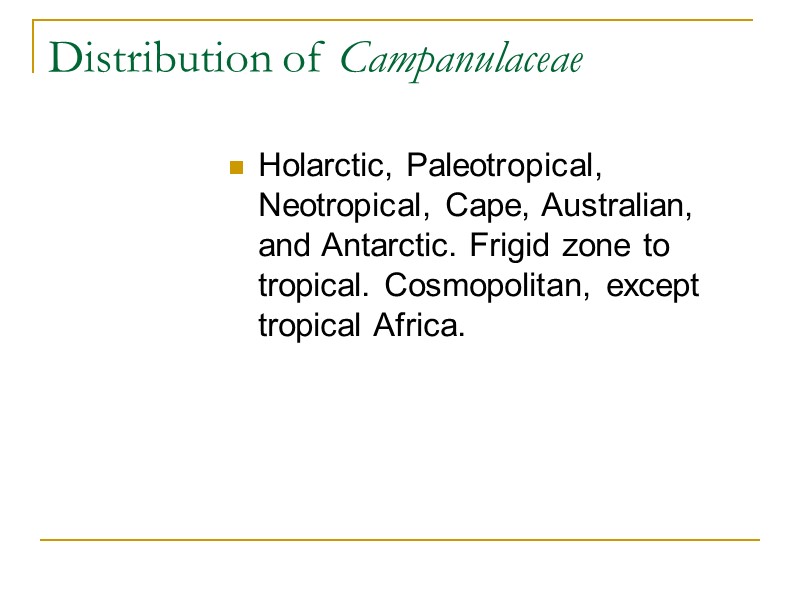
Distribution of Campanulaceae Holarctic, Paleotropical, Neotropical, Cape, Australian, and Antarctic. Frigid zone to tropical. Cosmopolitan, except tropical Africa.
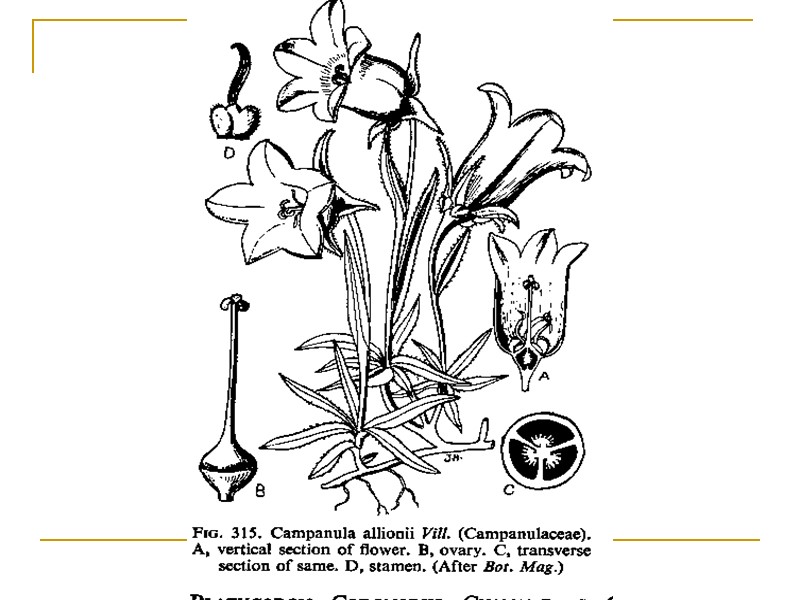
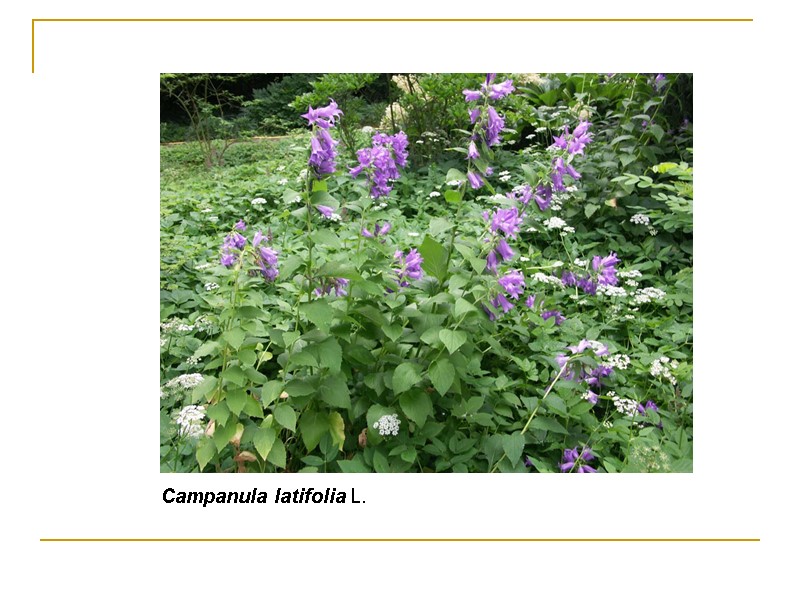
Campanula latifolia L.
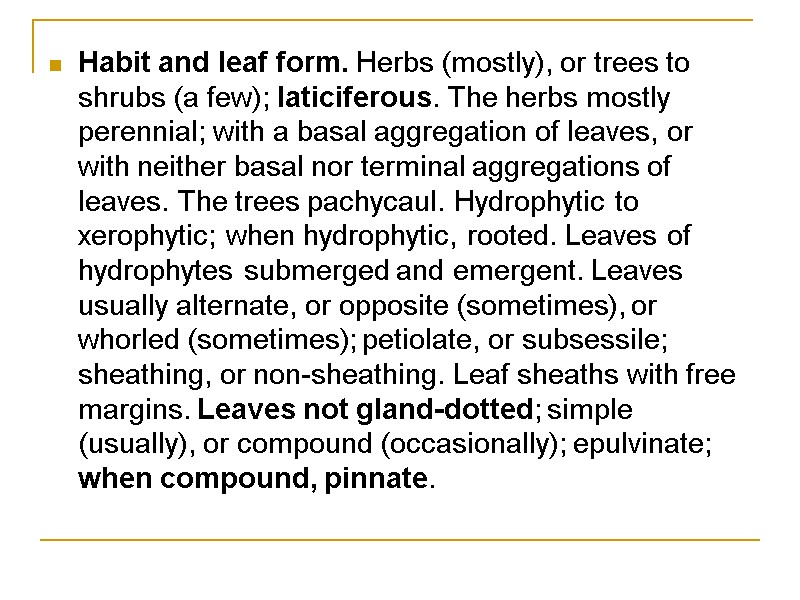
Habit and leaf form. Herbs (mostly), or trees to shrubs (a few); laticiferous. The herbs mostly perennial; with a basal aggregation of leaves, or with neither basal nor terminal aggregations of leaves. The trees pachycaul. Hydrophytic to xerophytic; when hydrophytic, rooted. Leaves of hydrophytes submerged and emergent. Leaves usually alternate, or opposite (sometimes), or whorled (sometimes); petiolate, or subsessile; sheathing, or non-sheathing. Leaf sheaths with free margins. Leaves not gland-dotted; simple (usually), or compound (occasionally); epulvinate; when compound, pinnate.
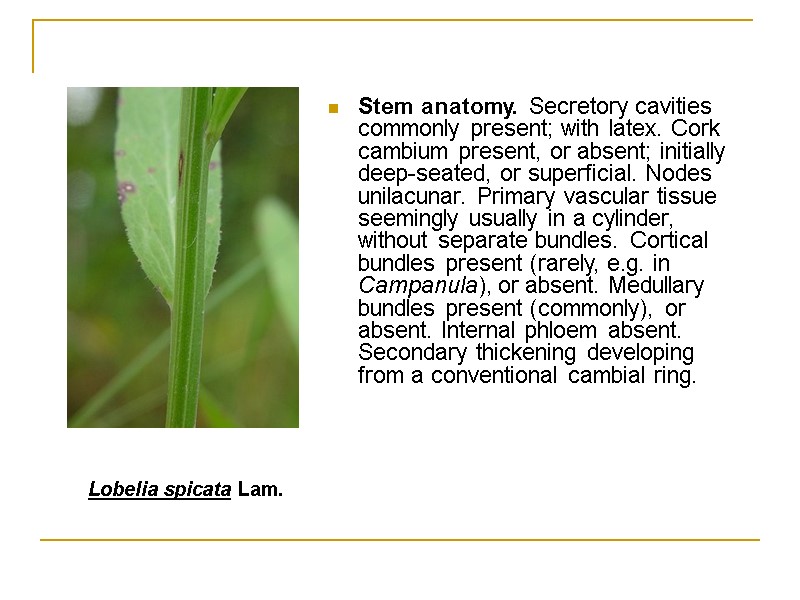
Stem anatomy. Secretory cavities commonly present; with latex. Cork cambium present, or absent; initially deep-seated, or superficial. Nodes unilacunar. Primary vascular tissue seemingly usually in a cylinder, without separate bundles. Cortical bundles present (rarely, e.g. in Campanula), or absent. Medullary bundles present (commonly), or absent. Internal phloem absent. Secondary thickening developing from a conventional cambial ring. Lobelia spicata Lam.
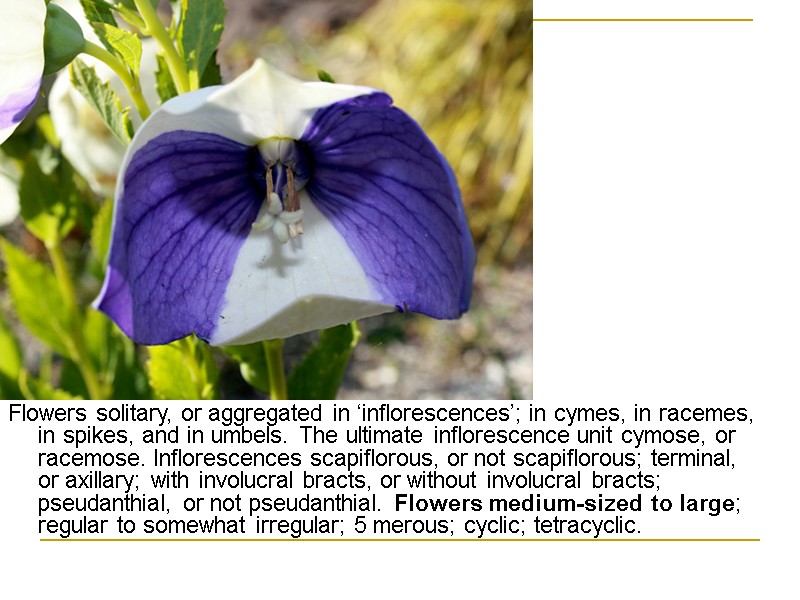
Flowers solitary, or aggregated in ‘inflorescences’; in cymes, in racemes, in spikes, and in umbels. The ultimate inflorescence unit cymose, or racemose. Inflorescences scapiflorous, or not scapiflorous; terminal, or axillary; with involucral bracts, or without involucral bracts; pseudanthial, or not pseudanthial. Flowers medium-sized to large; regular to somewhat irregular; 5 merous; cyclic; tetracyclic.
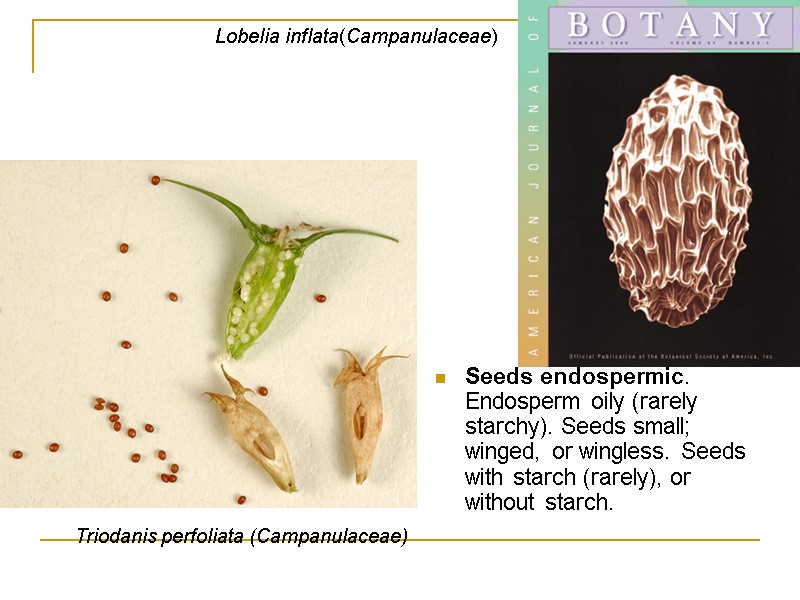
Seeds endospermic. Endosperm oily (rarely starchy). Seeds small; winged, or wingless. Seeds with starch (rarely), or without starch. Lobelia inflata(Campanulaceae) Triodanis perfoliata (Campanulaceae)
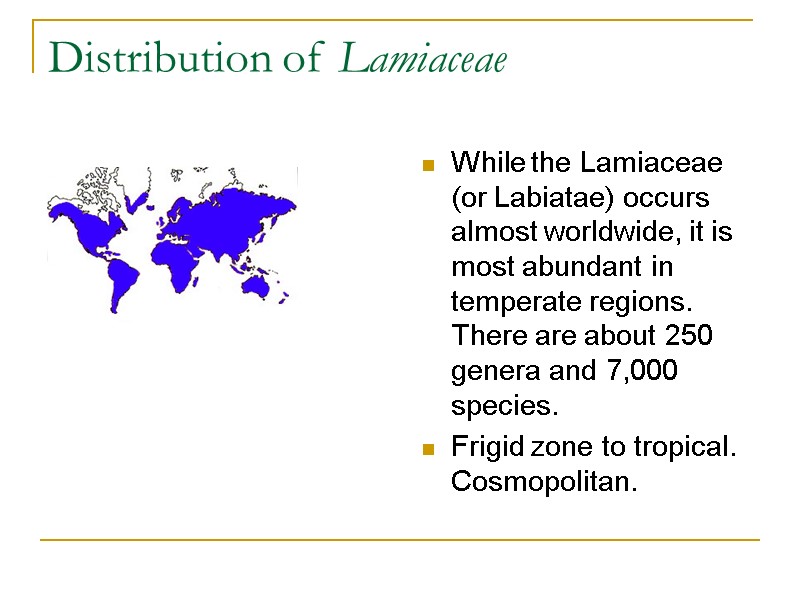
Distribution of Lamiaceae While the Lamiaceae (or Labiatae) occurs almost worldwide, it is most abundant in temperate regions. There are about 250 genera and 7,000 species. Frigid zone to tropical. Cosmopolitan.
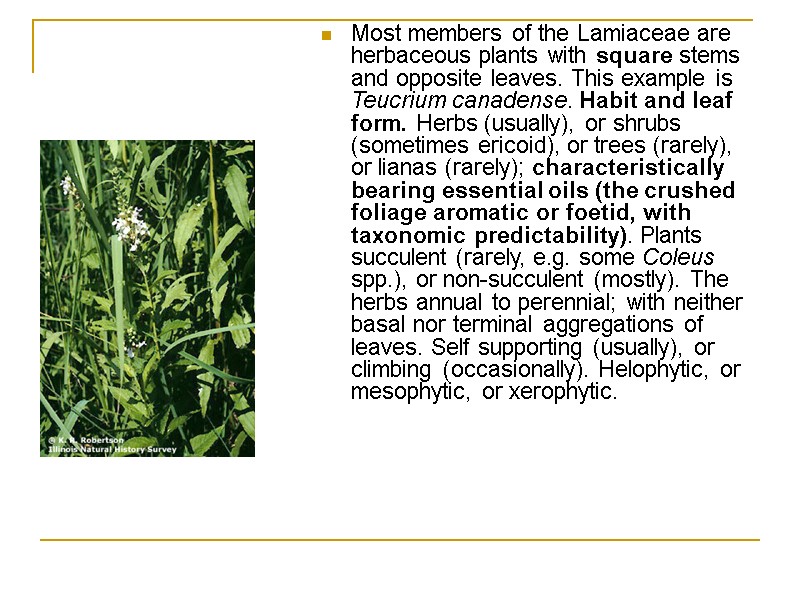
Most members of the Lamiaceae are herbaceous plants with square stems and opposite leaves. This example is Teucrium canadense. Habit and leaf form. Herbs (usually), or shrubs (sometimes ericoid), or trees (rarely), or lianas (rarely); characteristically bearing essential oils (the crushed foliage aromatic or foetid, with taxonomic predictability). Plants succulent (rarely, e.g. some Coleus spp.), or non-succulent (mostly). The herbs annual to perennial; with neither basal nor terminal aggregations of leaves. Self supporting (usually), or climbing (occasionally). Helophytic, or mesophytic, or xerophytic.

Teucrium flavum L. Herbs (usually), or shrubs (sometimes ericoid), or trees (rarely), or lianas (rarely); characteristically bearing essential oils (the crushed foliage aromatic or foetid, with taxonomic predictability). Plants succulent (rarely, e.g. some Coleus spp.), or non-succulent (mostly). The herbs annual to perennial; with neither basal nor terminal aggregations of leaves. Self supporting (usually), or climbing (occasionally). Helophytic, or mesophytic, or xerophytic.

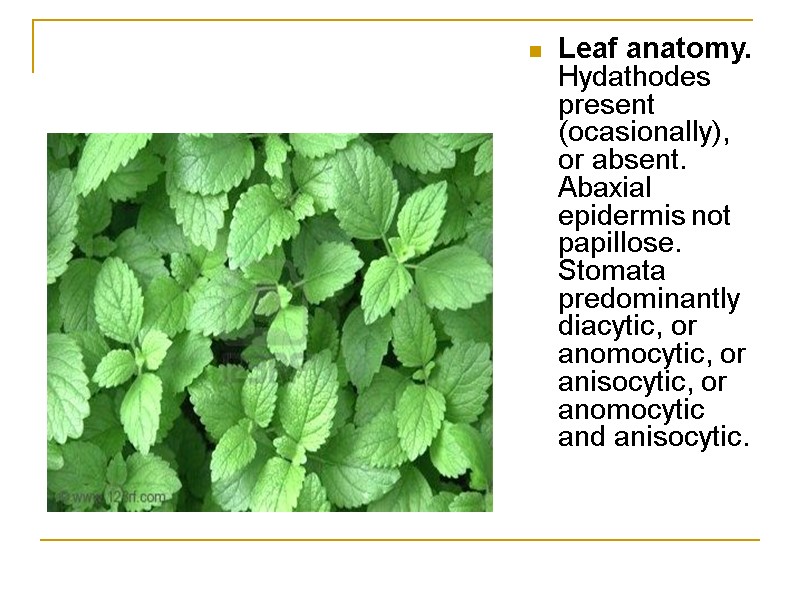
Leaf anatomy. Hydathodes present (ocasionally), or absent. Abaxial epidermis not papillose. Stomata predominantly diacytic, or anomocytic, or anisocytic, or anomocytic and anisocytic.
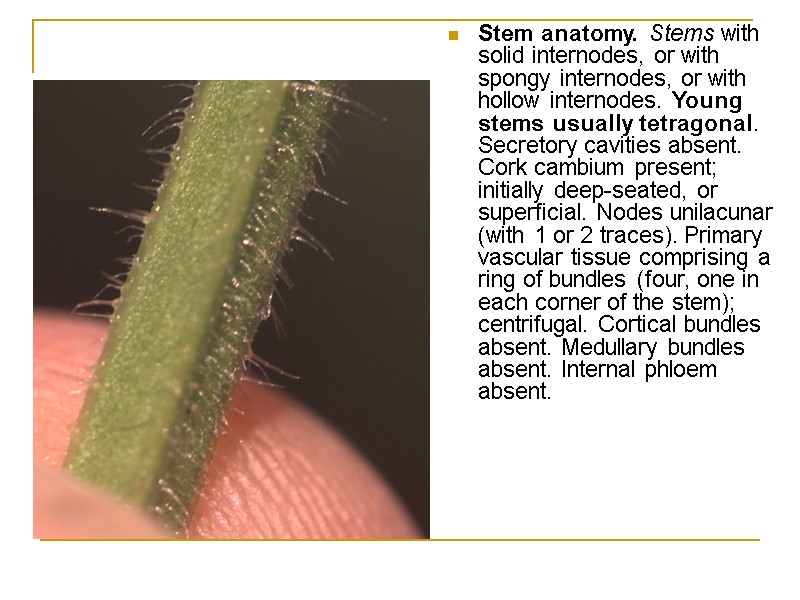
Stem anatomy. Stems with solid internodes, or with spongy internodes, or with hollow internodes. Young stems usually tetragonal. Secretory cavities absent. Cork cambium present; initially deep-seated, or superficial. Nodes unilacunar (with 1 or 2 traces). Primary vascular tissue comprising a ring of bundles (four, one in each corner of the stem); centrifugal. Cortical bundles absent. Medullary bundles absent. Internal phloem absent.
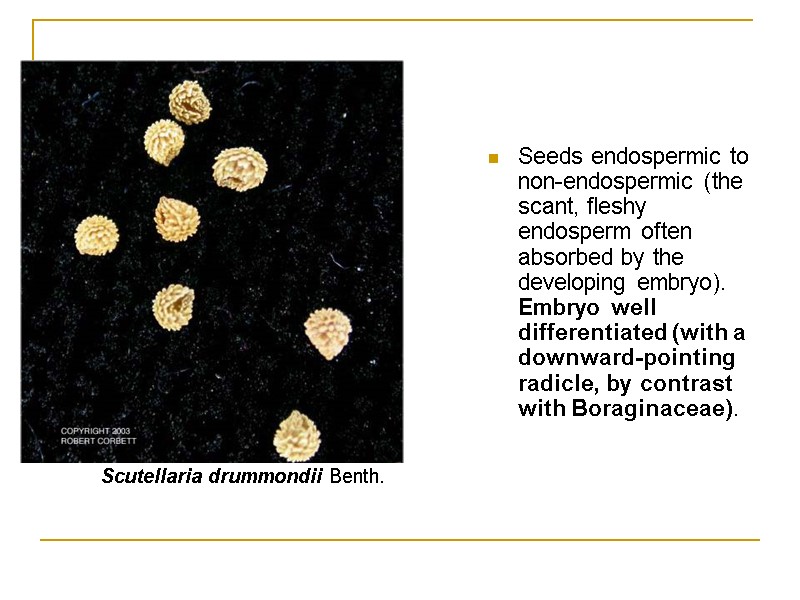
Seeds endospermic to non-endospermic (the scant, fleshy endosperm often absorbed by the developing embryo). Embryo well differentiated (with a downward-pointing radicle, by contrast with Boraginaceae). Scutellaria drummondii Benth.
37798-3_ast,bor,camp,lam.ppt
- Количество слайдов: 30

